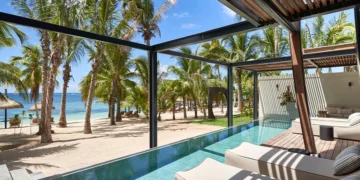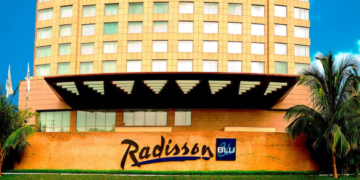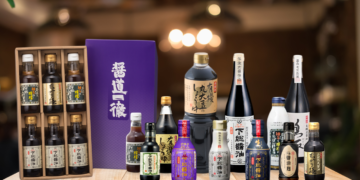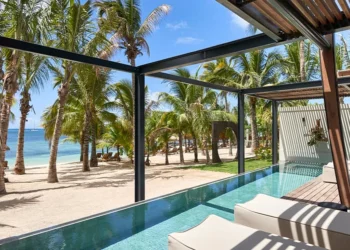In the dynamic world of hospitality, where each guest encounter is a narrative waiting to unfold, the pulse of success beats within the innovative and trendsetting designs that shape these spaces. Much like threads woven into a tapestry, hospitality design trends create a rich and vibrant narrative, transforming physical spaces into memorable stories. Join us as we embark on a captivating journey through the latest and most influential trends, delving into the nuances that redefine and elevate the landscape of hospitality design.
Holistic Experiences through User-Centric Design
- The Pivotal Role of Understanding and Prioritizing Guest Needs
The cornerstone of modern hospitality design lies in a profound understanding of the guest. It’s about more than just aesthetics; it’s about crafting an experience that addresses and exceeds the expectations of each individual. Designers are now focusing on creating spaces that anticipate and cater to the diverse needs of guests, from the business traveler seeking productivity to the leisure guest seeking relaxation.
- Personalization as a Guiding Principle in Creating Bespoke and Immersive Experiences
The era of one-size-fits-all hospitality is behind us. Personalization has become a guiding principle in design, with establishments seeking to create bespoke and immersive experiences. From personalized check-in processes to room configurations tailored to individual preferences, the modern traveler desires a stay that feels uniquely their own.
Hospitality Design Trends: Sustainable Innovations
- The Paradigm Shift Towards Eco-Conscious and Sustainable Design Practices
As the world grapples with environmental challenges, the hospitality industry is undergoing a significant transformation towards sustainability. Design is not just about aesthetics; it’s a commitment to responsible stewardship of the environment. Establishments are increasingly adopting eco-conscious practices, using sustainable materials, and implementing energy-efficient solutions.
- Incorporating Green Materials, Energy-Efficient Solutions, and Waste Reduction Strategies
Green materials, energy-efficient lighting, and waste reduction strategies are becoming integral components of hospitality design. From the use of recycled and upcycled materials to the incorporation of renewable energy sources, the industry is striving to create spaces that are not only visually appealing but also environmentally responsible.
Tech-Infused Environments: The Future of Hospitality

- The Transformative Impact of Technology on Guest Interactions and Experiences
Technology is reshaping the landscape of hospitality, revolutionizing the way guests interact with their surroundings. From seamless check-ins through mobile apps to in-room smart devices, the integration of cutting-edge technology enhances guest experiences, making them more convenient and enjoyable.
- From Smart Rooms to Virtual Concierges: Exploring the Integration of Cutting-Edge Tech in Hospitality
The future envisions a seamless blend of technology and hospitality, with smart rooms that anticipate guests’ needs and virtual concierges offering personalized recommendations. The challenge lies in striking a balance between technological advancements and maintaining the human touch that defines hospitality.
Flexibility and Adaptability in Design
- The Rise of Flexible Spaces Catering to Diverse Guest Needs: Hospitality design is no longer about static spaces; it’s about adaptability and versatility. The rise of flexible spaces acknowledges the diverse needs of guests, providing areas that can transform to cater to various purposes, from co-working spaces to event hosting.
- Dynamic Layouts, Movable Partitions, and Multifunctional Furniture Enhancing Versatility: Designers are embracing dynamic layouts, movable partitions, and multifunctional furniture to enhance the adaptability of spaces. This not only maximizes the utility of areas but also adds an element of surprise, contributing to an enhanced overall guest experience.
Artistic Flair and Cultural Storytelling
- Spotlighting the Integration of Art and Culture in Hospitality Design
Hospitality spaces are increasingly becoming canvases for artistic expression and cultural storytelling. Establishments are recognizing the value of integrating art and culture into their design, creating immersive environments that speak to the soul of the locale.
- Collaborations with Local Artists, Immersive Installations, and Culturally Inspired Interiors
From collaborations with local artists to immersive installations and culturally inspired interiors, the integration of art and culture adds a unique identity to each establishment. This not only enhances the guest experience but also fosters a sense of connection with the surrounding community.
Wellness-Oriented Design: Nurturing the Guest’s Well-Being

- The Emergence of Wellness-Focused Design Elements in Hospitality: As wellness takes center stage in people’s lives, hospitality design is responding by incorporating elements that contribute to the well-being of guests. Establishments are integrating spas, fitness centers, and mindfulness spaces as integral components of their design.
- Incorporating Spas, Fitness Centers, and Mindfulness Spaces as Integral Components: Designing spaces that promote physical and mental well-being has become a priority. From well-equipped fitness centers to serene spa retreats, these elements not only cater to health-conscious travelers but also contribute to a holistic and rejuvenating guest experience.
Color Psychology: Shaping Mood and Atmosphere
- Exploring the Psychological Impact of Color Choices on Guest Emotions
The use of color in hospitality design goes beyond aesthetics; it has a profound impact on the emotional experience of guests. Designers are exploring the psychological effects of color, selecting hues that evoke specific emotions and moods.
- Strategic Use of Color to Create Specific Atmospheres and Enhance Overall Mood
From calming blues in spa areas to vibrant yellows in communal spaces, the strategic use of color enhances the atmosphere and contributes to the overall mood of the space. Designers are leveraging color psychology to create environments that align with the intended guest experience.
The Glimpse into Tomorrow: Future Trends in Hospitality Design
- Predictions and Insights into Upcoming Trends Shaping the Future: The ever-evolving nature of the hospitality industry necessitates a constant gaze into the future. Predictions and insights into upcoming trends allow designers and establishments to stay ahead of the curve, anticipating the needs and desires of the evolving guest.
- Anticipating the Next Wave of Innovations in Response to Evolving Guest Expectations: As guest expectations continue to evolve, so too must hospitality design. Anticipating the next wave of innovations, whether it be in technology, sustainability, or experiential design, ensures that establishments remain at the forefront of the industry, offering experiences that captivate and delight.
Conclusion
In the intricate dance of hospitality design trends, each thread contributes to the masterpiece that is the guest experience. As designers and establishments navigate this ever-evolving landscape, the incorporation of these trends becomes not only a choice but a strategic imperative. By embracing innovation, prioritizing guest satisfaction, and staying attuned to the pulse of contemporary design, the hospitality industry not only adapts but leads the way into a future where every stay is a unique and unforgettable story. In the kaleidoscope of trends, the design becomes not just a reflection of the times but a beacon guiding the way towards experiential excellence in the world of hospitality.

























